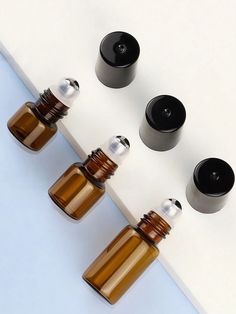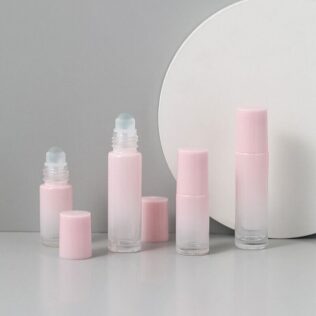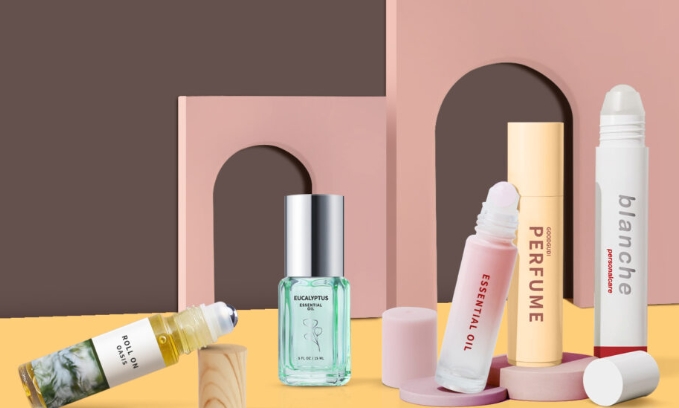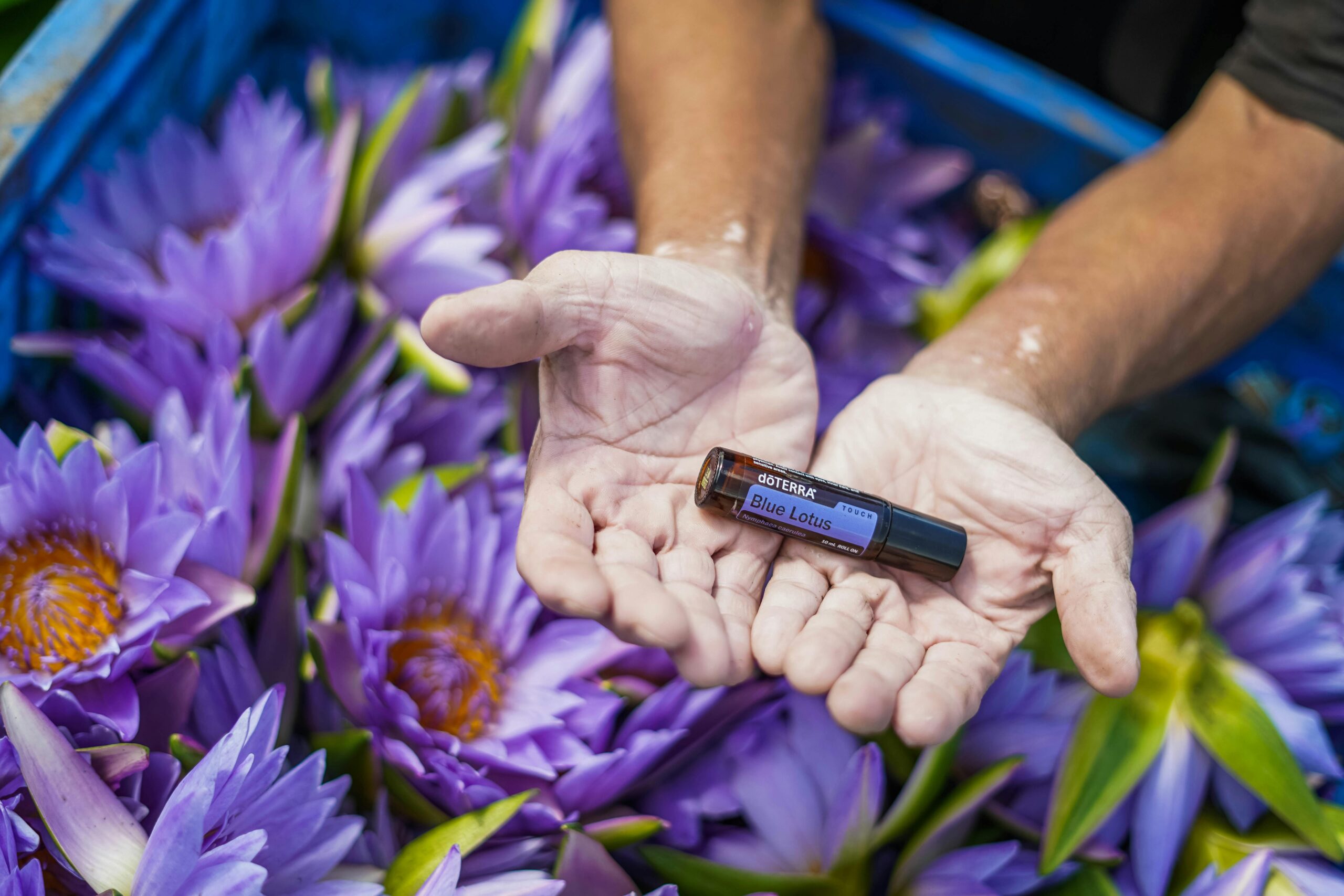In today’s environmentally-conscious world, businesses are increasingly seeking sustainable packaging options that align with consumer values and environmental responsibility. When it comes to packaging solutions, roller bottles are a popular choice for a variety of products, from skincare to essential oils. However, with multiple material options available—such as glass, plastic, and bamboo—it can be challenging to determine which is the best fit for your business.
In this blog, we’ll compare glass, plastic, and bamboo roller bottles, exploring their pros and cons, sustainability impact, and how each material aligns with different business needs. By the end, you’ll have a clearer understanding of how to choose the right roller bottle material for your product, while also considering eco-friendly alternatives for a more sustainable future.
Overview of Roller Bottle Materials
When selecting roller bottles, the choice of material plays a critical role in determining the product’s functionality, appeal, and alignment with your brand’s values. Here’s an overview of the three most commonly used materials—glass, plastic, and bamboo:
Glass roller applicators are a popular choice for premium and luxury products due to their elegant appearance and superior functionality. They are crafted from durable glass, which helps preserve the product’s integrity.
Common Uses:
Essential oils, perfumes, serums, and aromatherapy blends.
Key Features:
Excellent UV protection, especially in tinted options like amber or cobalt glass.
Non-reactive material ensures product stability over time.
Recyclable and reusable, making them a sustainable choice.
Glass roller bottles are ideal for brands focusing on quality and aesthetics but may require careful handling due to their fragility.
Plastic roller bottles are a versatile and cost-effective option. Made from lightweight materials like PET or PP, they are widely used for products that prioritise convenience and affordability.
Common Uses:
Travel-size cosmetics, mass-market personal care products, and children’s skincare.
Key Features:
Lightweight and durable, reducing the risk of breakage during transit.
Available in a wide range of shapes, sizes, and colours.
Affordable production costs, making them suitable for high-volume product lines.
However, plastic bottles may not offer the same level of sustainability or chemical resistance as glass, which can be a concern for eco-conscious brands.
More info :Plastic Bottle vs Glass Bottle for Cosmetic Packaging
Bamboo roller bottles combine the benefits of glass and the natural appeal of bamboo. Typically, these bottles feature an inner glass container encased in a bamboo shell, offering both style and functionality.
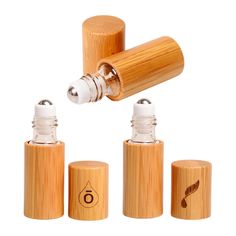
Organic skincare products, natural wellness items, and eco-friendly cosmetic brands.
Key Features:
Renewable and biodegradable bamboo material aligns with sustainable branding.
Unique and natural aesthetic that resonates with environmentally conscious consumers.
Lightweight yet protective design enhances durability while maintaining elegance.
Although bamboo roller bottles have a higher production cost, they are an excellent choice for brands looking to stand out in the market with eco-friendly packaging.
Pros and Cons of Each Material
When choosing a roller bottle material for your products, understanding the advantages and limitations of each option is essential. Here’s a breakdown of the pros and cons of glass, plastic, and bamboo roller bottles:
Glass Roller Bottles
Pros:
Premium Appearance: Provides a sleek and luxurious look, enhancing the perceived value of the product.
Chemical Resistance: Non-reactive material preserves the integrity of sensitive or volatile substances.
UV Protection: Tinted glass options protect light-sensitive products like essential oils.
Sustainable: Recyclable and reusable, aligning with eco-conscious branding.
Cons:
Fragility: Prone to breaking or shattering, requiring careful handling and packaging.
Weight: Heavier than plastic or bamboo, increasing shipping costs.
Cost: Higher production costs compared to plastic, especially for custom designs.
Plastic Roller Bottles
Pros:
Lightweight: Easy to handle and transport, making it ideal for travel-size products.
Durability: Impact-resistant and shatterproof, reducing the risk of breakage.
Cost-Effective: Affordable to produce, especially for high-volume orders.
Customisation: Available in a wide variety of colours, shapes, and sizes to suit branding needs.
Cons:
Limited Sustainability: Less sustainable and harder to recycle.
Chemical Interaction: Certain chemicals may react with plastic, affecting the product’s quality over time.
Perception: May not convey the same premium feel as glass or bamboo.
Bamboo Roller Bottles
Pros:
Eco-Friendly: Made from renewable bamboo, reducing environmental impact.
Unique Aesthetic: Natural and earthy appearance that appeals to eco-conscious consumers.
Protective Design: Bamboo casing offers extra durability to the inner glass bottle.
Brand Differentiation: Stands out in the market for its sustainable and stylish design.
Cons:
Higher Cost: More expensive to produce compared to glass or plastic.
Limited Availability: May require specialised suppliers and longer production times.
Care Requirements: Bamboo is prone to moisture damage if not properly treated or sealed.
Here at Primepac, we specialise in providing tailored solutions for roller bottle packaging, offering a wide range of materials including glass, plastic, and bamboo. Whether you need eco-friendly options, premium designs, or cost-effective choices, we’re here to help you find the perfect fit for your brand. Contact us today to create sustainable, high-quality packaging that meets your product’s unique needs!
Key Considerations for Choosing the Right Material: Decision-Making Matrix
Choosing the right material for roller bottles involves balancing multiple factors, from product needs to branding goals. This decision-making matrix breaks down the key aspects to help businesses select the material effectively.
Material Features
Glass: Offers chemical inertness, recyclability, and a premium aesthetic.
Plastic: Lightweight, shatterproof, and highly customisable.
Bamboo: Eco-friendly, biodegradable, and visually unique.
How to Decide: Evaluate the specific properties of each material based on product type, consumer preferences, and packaging durability.
Market Priorities
Consumer Demand: Is your target audience looking for eco-friendly options (bamboo), luxury appeal (glass), or affordability and practicality (plastic)?
Trends and Preferences: Track industry trends and buyer behaviour to align material choices with market expectations.
Cost vs. Benefit Analysis
Initial Investment:
Glass: Higher cost due to weight and manufacturing complexity.
Plastic: Generally low-cost and scalable.
Bamboo: Mid-to-high cost but aligns with premium or sustainable branding.
Long-Term Gains:
Sustainability and recyclability can drive brand loyalty.
Durable materials reduce wastage and replacement costs.
Scalability
Production Feasibility:
Plastic: Easily mass-produced for large-scale orders.
Glass: May require specialised handling for high-volume manufacturing.
Bamboo: Limited by natural resource availability but suitable for niche markets.
Supply Chain:Evaluate the availability of materials and shipping logistics for scalability.
Branding and Aesthetic Alignment
Glass: Perfect for brands emphasising luxury, elegance, or purity.
Plastic: Best for practical, mass-market products that focus on functionality.
Bamboo: Resonates with eco-conscious, premium, or artisanal brands.
Decision Tip: Choose materials that not only protect the product but also enhance the brand story and customer perception.
The Role of Sustainability in Packaging
Sustainability is no longer optional in modern packaging—it’s a necessity driven by consumer demand and environmental responsibility. Here we’ll explore how packaging materials impact sustainability and how businesses can integrate eco-friendly practices.
Understanding Material Impact
Glass:
Recyclable and reusable, with a long lifespan.
Energy-intensive production process but lower degradation over time.
Plastic:
Lightweight and low-cost, but often ends up in landfills.
Options for recyclable plastics, though recycling rates vary by region.
Bamboo:
Biodegradable and renewable; minimal environmental impact during disposal.
Production involves low energy consumption compared to synthetic materials.
Recycling vs. Biodegradability
Glass can be recycled indefinitely without loss of quality.
Plastic recycling depends on type (e.g., PET is more commonly recycled).
Bamboo breaks down naturally, returning nutrients to the soil.
Ideal for brands aiming to reduce landfill contributions.
Carbon Footprint Reduction
Glass: Reduces waste but has a higher carbon footprint during production and transport due to its weight.
Plastic: Lower production emissions but contributes heavily to long-term pollution.
Bamboo: Minimal carbon emissions; bamboo cultivation absorbs CO2 and supports reforestation efforts.
Industry Shifts and Innovations
Circular Economy: Encourages materials like glass and bamboo, which can be reused or composted.
Upcycled Packaging: New trends in using recycled plastic or bamboo waste to create innovative packaging solutions.
Hybrid Designs: Combining materials (e.g., bamboo caps with glass bottles) to optimise sustainability without sacrificing quality.
Consumer Influence
Eco-Conscious Behaviour: Surveys show consumers prefer sustainable packaging and are willing to pay a premium for it.
Brand Loyalty: Companies that invest in eco-friendly practices often gain stronger brand loyalty and differentiation.
Sustainability is more than a trend—it’s a responsibility. At Primepac, we’re committed to leading the way in sustainable packaging solutions that enhance your brand while reducing environmental impact. Join us in making a positive difference—explore our eco-friendly packaging solutions today and take the first step towards a greener future!
Conclusion
As businesses increasingly prioritise sustainability, choosing the right packaging material has become more critical than ever. Glass, plastic, and bamboo each offer distinct advantages and challenges, and understanding these differences is key to making an informed decision that aligns with your business values and goals. Whether you opt for the recyclability of glass, the cost-effectiveness of plastic, or the eco-friendliness of bamboo, the key is to balance functionality, sustainability, and consumer expectations.
By carefully considering the environmental impact, durability, and cost-effectiveness of each material, businesses can transition to more sustainable packaging solutions that resonate with eco-conscious consumers. Additionally, staying updated on packaging regulations and sustainability standards ensures that your business remains compliant while contributing to a greener future.
Ultimately, the move toward eco-friendly packaging is more than just a trend—it’s a long-term commitment to protecting the environment and building a brand that reflects responsibility and innovation. Take the first step today, and make choices that benefit both your business and the planet for years to come.
